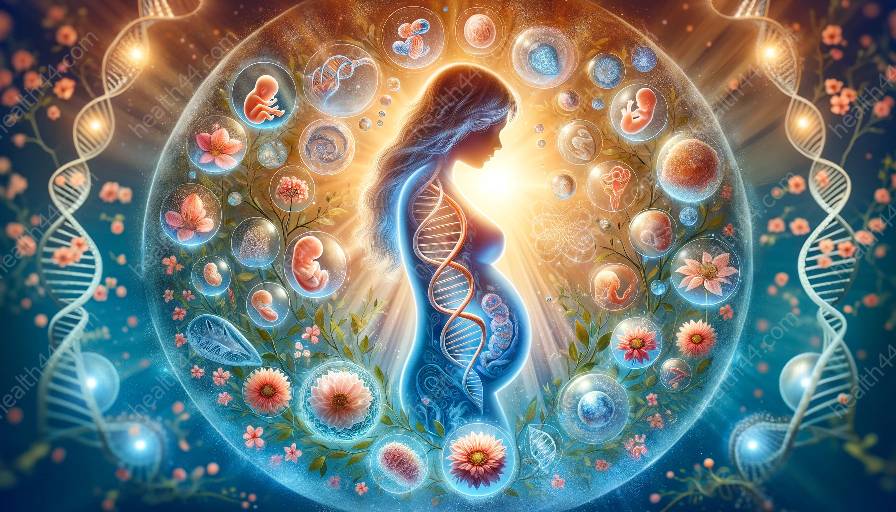Organogenesis is a crucial process in human fetal development, during which the organs and organ systems of the body are formed and begin to develop. Understanding the key stages of organogenesis is essential in comprehending how the complex human body comes into existence. This topic cluster will provide comprehensive insights into the intricacies of organogenesis and its vital role in shaping human life.
The Importance of Organogenesis
Organogenesis is vital for the proper development and function of organs and organ systems. It is a complex process that involves the transformation of undifferentiated cells into the diverse range of specialized cells that form the intricate structures of the human body. The stages of organogenesis play a pivotal role in ensuring the proper formation and functioning of organs, making it a fundamental aspect of human biology and development.
Embryonic Development and Organogenesis
Organogenesis occurs during the early stages of embryonic development, following the process of gastrulation. Gastrulation is the phase when the three primary germ layers – ectoderm, mesoderm, and endoderm – are established. These germ layers give rise to the different tissues and organs of the body through a series of intricate developmental processes, marking the beginning of organogenesis.
Key Stages of Organogenesis
The key stages of organogenesis can be categorized into several fundamental processes that take place during human fetal development. These stages shape the formation and development of various organs and systems within the human body:
1. Cell Proliferation and Differentiation
During the initial stages of organogenesis, undifferentiated cells proliferate and differentiate into specialized cell types, laying the foundation for the formation of specific organs. This process involves intricate signaling pathways and genetic regulation to ensure the precise development of distinct cell populations.
2. Establishment of Organ Primordia
Organ primordia are the early anatomical structures that will eventually develop into fully functional organs. The establishment of organ primordia marks a critical stage in organogenesis, as it sets the groundwork for the subsequent development and organization of specific organs.
3. Morphogenesis
Morphogenesis refers to the shaping of the developing organs and tissues into their characteristic forms. This process involves intricate cellular movements, interactions, and rearrangements, leading to the emergence of recognizable organ structures with distinct shapes and functions.
4. Organ Identity and Patterning
As organogenesis progresses, the process of organ identity and patterning ensures that each organ develops its unique characteristics and spatial organization. Molecular signals and genetic cues play a vital role in guiding the spatial arrangement and differentiation of cells within developing organs.
5. Vascularization and Innervation
As organogenesis nears completion, the newly formed organs require a network of blood vessels and nerve fibers to support their physiological functions. Vascularization and innervation are essential processes that ensure the proper supply of nutrients and oxygen, as well as the establishment of neural connections within developing organs.
Role of Genetic and Environmental Factors
The key stages of organogenesis are profoundly influenced by both genetic and environmental factors. Genetic pathways and regulatory networks orchestrate the intricate processes of cell differentiation, tissue morphogenesis, and organ development. Additionally, environmental influences, such as maternal nutrition, exposure to toxins, and external stimuli, can have a significant impact on organogenesis and fetal development. Understanding the interplay between genetic and environmental factors is crucial in comprehending the complexities of organogenesis and its vulnerability to external influences.
Integration of Organ Systems
As the key stages of organogenesis unfold, the individual organs and organ systems become integrated to form a functional human body. This integration involves the coordination of various physiological functions and the establishment of intricate connections between different organs and tissues. The culmination of organogenesis represents the remarkable achievement of creating a complex and harmoniously functioning organism.
Continued Development and Maturation
Following the completion of organogenesis, the developed organs continue to undergo further maturation and refinement throughout fetal development and into postnatal life. This ongoing process ensures that the organs attain their full functionality and adaptability, allowing the human body to thrive in diverse environmental conditions and physiological challenges.
Conclusion
The key stages of organogenesis in humans are a testament to the remarkable intricacy and precision of fetal development. From the initial proliferation and differentiation of cells to the establishment of fully functional organs, organogenesis represents a pivotal journey in shaping the human body. Understanding the complexities of organogenesis not only provides invaluable insights into human biology but also underscores the delicate balance between genetic programming and environmental influences in determining the course of human development.


